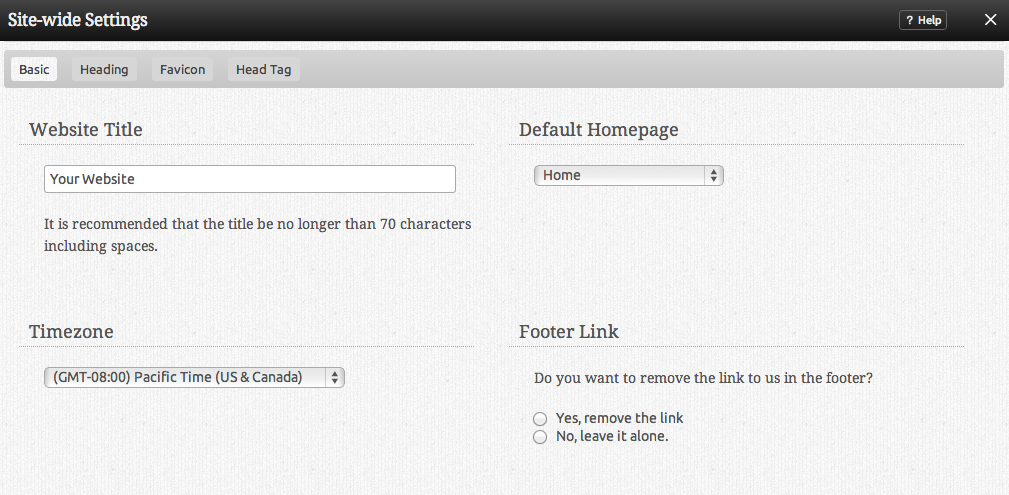Advanced Website Settings
A Favicon is the small picture that appears to the left of your websites address in your web browser. You can select from a list of preset icons by clicking on "Select Icon", or upload one of your own (file must be a 16x16 pixel .ico file to upload). If you don't have an icon editor, you may upload a standard graphic file to a generator, such as favicon.cc.
The HTML Head area contains the head element. Elements inside <head> tags can include scripts, instruct the browser where to find stylesheets, provide meta information, and more. This is an extremely useful feature to create site-wide meta information that won't be removed if you change or upload a theme. For example, a description for your site, or keywords search engines can use to better index your site. Of course, keywords and descriptions for a specific page can still be managed in it's Page Settings.
Robots.txt is a file used to give special instructions to web robots. This allows you to block certain web robots from certain parts of your website, or direct them to relevant information.
A Sitemap XML file lists the URLs for your website that are most important. This allows search engines to crawl the site more intelligently. These are now auto-discoverable by search engines, which will help your site get indexed better and quicker.
With Code Highlighting, the builder will automatically color-code any snippets of programming code you include in Blog posts or Custom Content blocks. The Theme you choose here determines the color scheme the builder will use for highlighting your code.
The website Description will be used in the metatags when people or search engines visit your site. Most search engines will use the description for a summary in their search results.
Custom Keywords are used by some search engines for indexing your website. Keywords should be in a comma separated list (eg: hockey,sport,nhl).
Enabling Page-specific metatags allows you to specify a description or custom keywords for that page.

